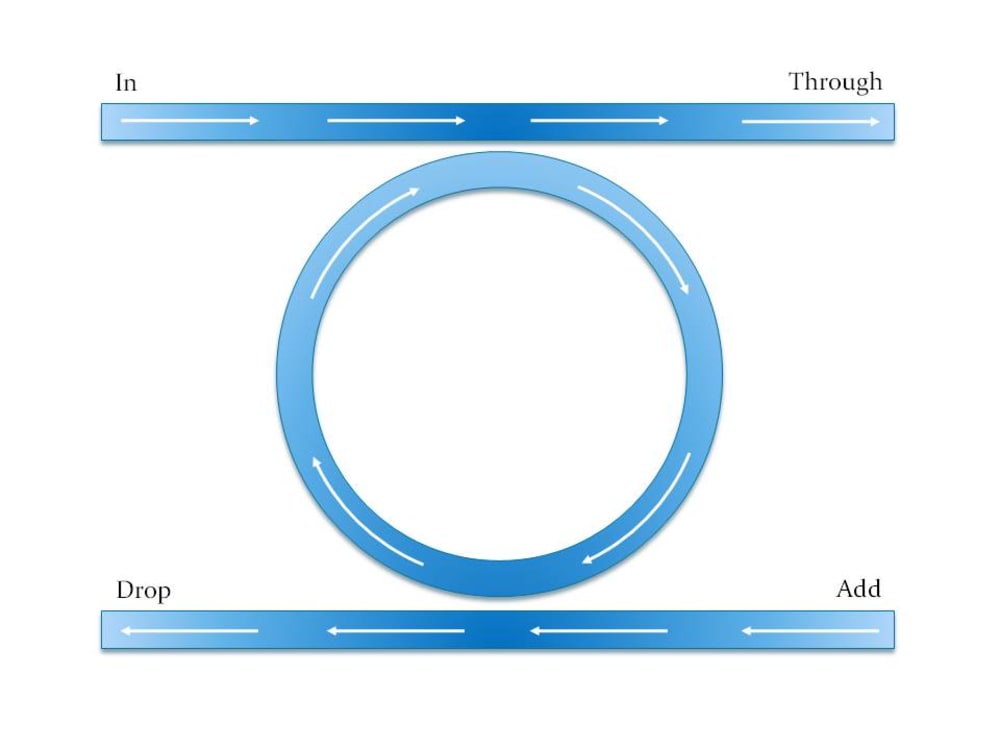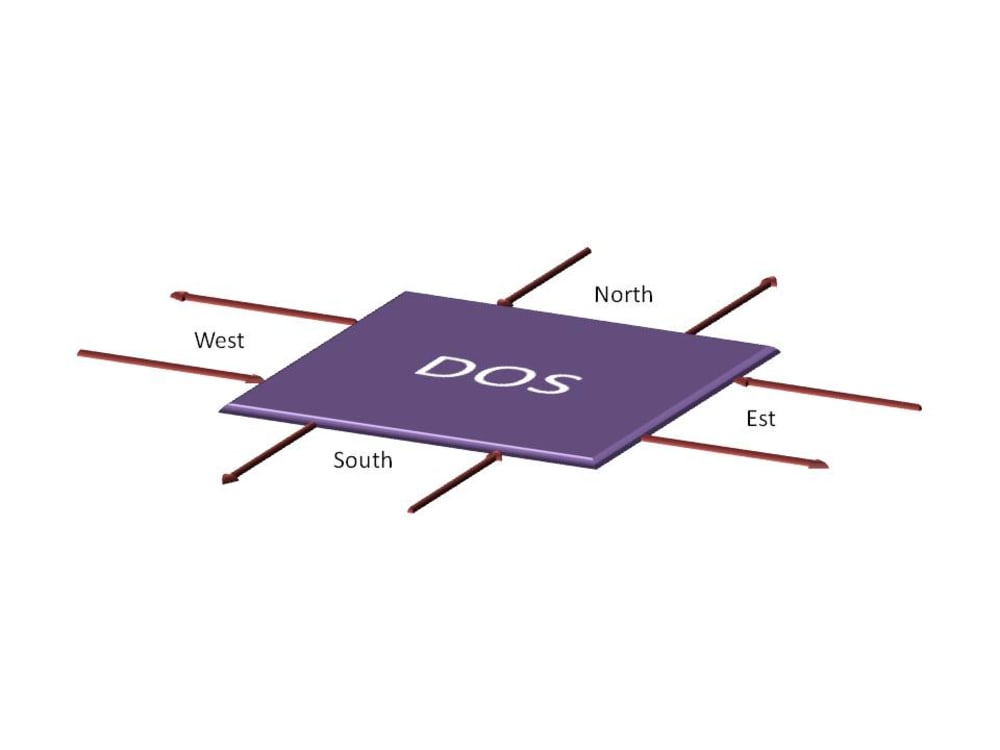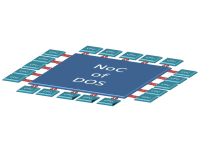We know that the main task of microelectronics is to decrease the computation time possibly reducing the power consumption of microchips. In fact to raise the clock speed is no more the right way to improve the performances.
As we see the current trend is the integration of more cores on a single chip (a few: 2, 4 or 6). But the problem of cooling down the modern microprocessors continues to exist because the larger is the number of cores connected together, the higher is the power dissipated by the interconnections and also the narrower is the bandwidth due to metal wires crosstalk, which cause a mismatch between the clock and the interconnection bus speeds further limiting performances.
Optical Networks-on-Chip (NoC) are the ideal candidates to break this vicious circle because light sources (to transmit data) and photodiodes (to receive data) have very low power consumptions. Moreover there is no crosstalk between optical signals transmitted inside the network when different wavelengths are employed (i.e. each core has its “color”). To be useful, this kind of technology has to be compatible with the standard technology employed to manufacture modern microchips (CMOS technology), and to be reconfigurable.
It has been shown that VCSELs (Vertical-Cavity Surface-Emitting Lasers) and other type of laser sources can be successfully integrated in CMOS technology platform while silicon photodiodes in NIR (Near Infrared) spectral region are fully CMOS compatible.
Then the NoC can be fabricated on Silicon On Insulator substrates (in fact the SOI technology is CMOS compatible) and designed involving Ring Resonators which allows fast wavelength switching between a bus (i.e. a waveguide) to another through resonance filtering like any band-pass filter in electronics.
However Ring Resonators fabricated on bare silicon on silica are not reconfigurable because their resonance cannot be switched between different channels. The silicon refractive index can be modified with temperature and/or doping (using PIN integrated junctions) to avoid this problem.
Another way to change the refractive index, with lower costs due to its simplicity, is to strain silicon which has shown an electro-optic behavior allowing the ring resonators tuning. Its electro-optic coefficients have values near (i.e. of the same order of magnitude) the ones of Lithium Niobate, which is the substrate commonly used to fabricate modulators for optical telecommunications.
Using all these technologies together, the design of Dynamic Optical Switches becomes possible and consequently their integration in a NoC. Moreover the fabrication process can be performed using conventional photolithography which allows fast prototyping bringing down costs.
This approach opens the possibility to integrate a larger and larger number of CPUs increasing computation performances, decreasing costs and reducing power consumption.
The possible applications of this kind of technology are a lot: from scientific supercomputing (for example: earth and space study, life care, etc.) and web server till end-user PCs and home automation.
Like this entry?
-
About the Entrant
- Name:Giovanni Battista Montanari
- Type of entry:individual
- Software used for this entry:Matlab, Comsol
- Patent status:none








